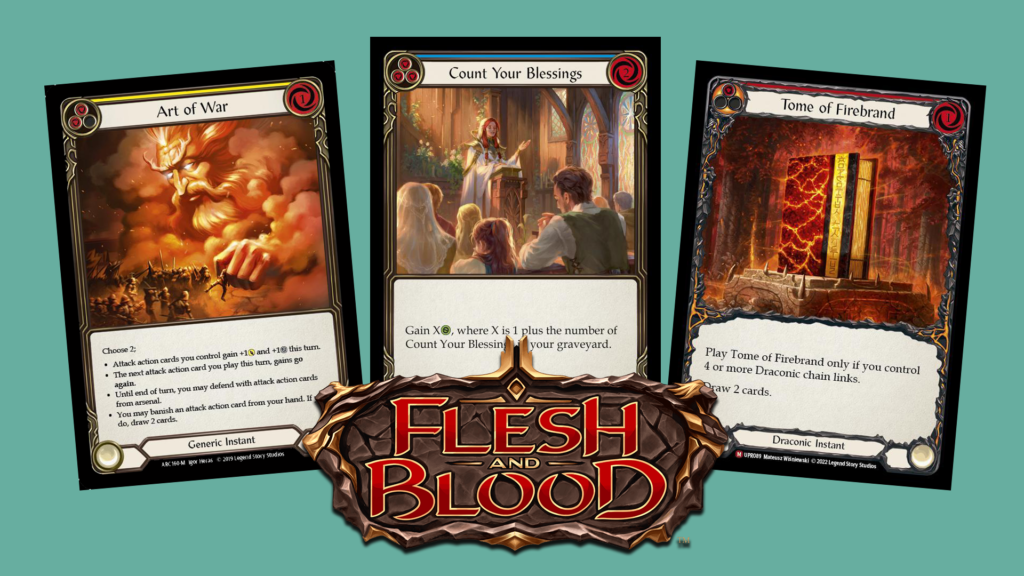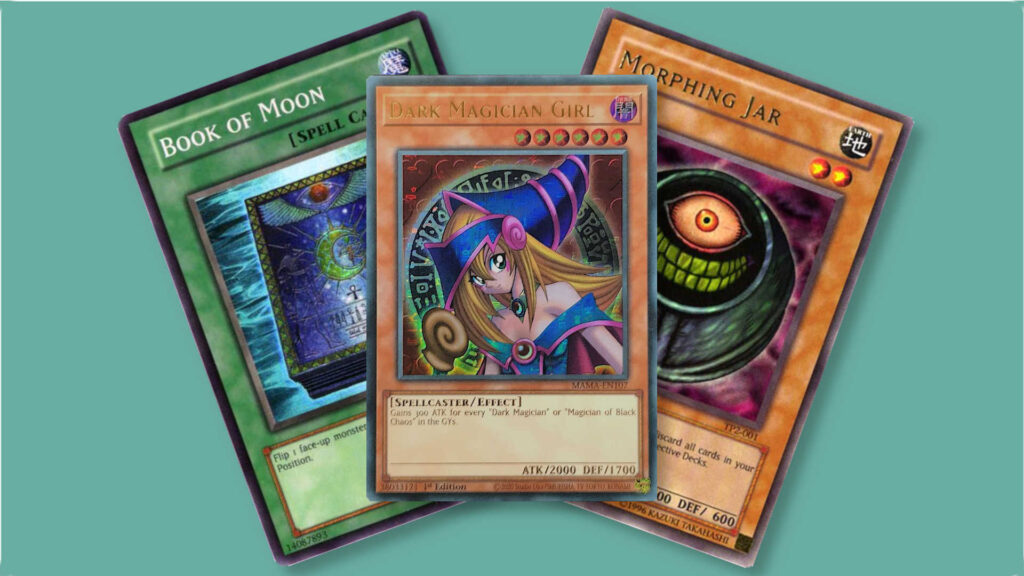So, here we are again. My esteemed colleague Ethan “Man Sant” Van Sant has already done a marvelous job going over the recent bans to hit Flesh and Blood, but with these bans and The Book Burning™, I think it’s time for us to take a look at the big picture and ask the big question: What are bans for? What makes a ban-worthy FAB card? And does FAB have a bit of a ban problem recently? Let’s find out!
Table of Contents
ToggleBans! Huh! What Are They Good For?
The answer may surprise you, as it’s not “absolutely nothing.” In fact, bans are good for a number of things. And so, when banning a card – or rather, as we mere players should be framing these discussions, asking for a card to be banned – we should try to keep in mind why we want the card banned. So let’s break down the myriad ways to make a ban-worthy card here.
People tend to break down discussions about card bans to the level of “ban it if it’s overpowered,” which is technically true but not the whole story. Cards have many ways of being “overpowered,” and it’s entirely dependent on the card how this power level issue manifests itself.
If a card is not only too good, but increasingly rare, the issue of its power level gets compounded by its availability. FAB players should instantly be thinking of the fabled rarity here. So far, none of FABs most sought-after cards have been hit with the ban hammer, but if one future fabled was just plain too good to the point where it becomes an auto-include, the time to ban it might be sooner than if it were a mere common.
Another very good reason for card bans is sheer ubiquity. This one might not even point toward any kind of power level issue: if every deck is running a certain card, the whole playing field ends up being leveled, in a way, but its terrible for deck diversity and might constrict the metagame.
FAB has a fun quirk here with its hero system: cards might be worth a ban just to make room for different ways to build a hero. Belittle comes to mind here, which not only was an auto-include in certain decks like Fai, Rising Rebellion or Briar, Warden of Thorns, but also further dictated how those decks would have to be built.
Alternatively, the ubiquity of cards can force certain heroes out of the meta. Zen, Tamer of Purpose being bonkers thanks to Bonds and Art of War not only forced out many heroes that couldn’t keep up with his speed or disrupt his game plan, but also made every other Ninja deck obsolete.
And then there are the cards that are just plain unfun to play against. Though to use a more professional term, these cards are usually referred to as “enabling problematic play patterns” or some such. Think Crown of Seeds or, more recently, Count. These cards might be too strong or not have enough answers to what they’re doing floating around in the metagame, but a concern that contributes to them being banned is that they prolong games and are frustrating to face.
Last but certainly not least, the kind of ban that the now-infamous Book Burning™ falls under: the paradigm shift ban. As it has been so long ago with the banning of Drone, sometimes game designers have to take a step back and evaluate the core assumptions they’ve been working under.
With Drone, that assumption was “We can break the relative lack of recursion in our system once.” And with Tome of Fyendal, Tome of Aetherwind, and Tome of Divinity, the assumption was “We can have a little card draw, as a treat.” In both cases it turns out that no, you really can’t. Or at least not that much.
What Makes a Flesh and Blood Card Ban-Worthy?
Many of the cards that have been banned in the history of Flesh and Blood are, with the benefit of hindsight, easily recognized as being ban-worthy. There are your card advantage engines, your efficiency offenders, your dawdling enablers and your… actually, I’m not sure how to classify Bonds. A nuttiness offender?
Point being that for a FAB card to be ban-worthy, it usually doesn’t take much outside of the known danger zones of trading card game design. However, FAB is fairly unique in the card game space, and so it stands to reason that there are some lessons to be learned from FABs design for us as players to evaluate the power level of cards more thoroughly moving forward.
For one, drawing cards – always a mark of power in any TCG – is even more powerful in Flesh and Blood than it is in other games. For the most part, this is due to the fact that with every turn, each player’s hand resets back to four cards (generally). So if you draw more cards than your opponent, their likelihood of being able to deal with your turn goes down drastically with every card drawn. This is what makes Art of War so good: you’re not only drawing extra cards, but buffing your output as well.
Furthermore, gaining life – usually a new player trap and efficiency death sentence in many game systems – is actually pretty good in FAB. For one: Your deck running out is a real concern in FAB, so simply outlasting your opponent is a viable strategy, at least fundamentally.
This gets compounded again by resetting your hand every turn. The comparative lack of snowballing means that games are more likely to become efficiency contests, and it doesn’t matter as much whether you’re efficiently decreasing your opponent’s life total or increasing/preserving your own – only how efficient you’re being. This is where cards like Sigil, Count, and Sink get their mojo.
And last, though this one is quite subjective, I’d posit that power level imbalances are much more egregious in FAB. For one, the randomness of the game is comparatively low (if we discount the fact that you’re drawing from a randomized deck, which, granted, is a big discount).
For one, you always start with your equipment already out and ready to go. Weapons are another way to make the game more predictable. And then there’s FABs resource system: the way that, in FAB, almost every card can act as a threat, an answer (by blocking), or as a resource.
Add to that pitch stacking, the arsenal, and the constantly cycling hand which means that you’re less reliant on any single draw step. These are incredible tools to hand to a player base. And they make balancing the game much more difficult – and necessary – than if the game were designed differently.
If a card is too powerful in FAB, players are about as well positioned to take advantage of it, as they can be in the TCG space. If a card is too good in Magic: The Gathering, there’s always the chance (intentionally designed into the game) that you don’t draw it or the lands needed to play it. These safety valves are much less pronounced in FAB.
In Short: LSS Is Doing a Really Good Job
So yeah, the sub heading kind of gives the game away, but I believe that under these circumstances, it’s kind of wondrous that the game is balanced as well as it is. Sure, there are outliers, but LSS has been really good at recognizing them and dealing with them as they come up.
And so, I would choose to answer our initial question of whether FAB has a ban problem with a resounding “No!” But any kind of game lives and dies by its community, and so I would like to extend the conversation to you: Do you think FAB has a ban problem?
Looking to get into Flesh and Blood on a budget? Then check out this Dash I/O Deck Tech.




